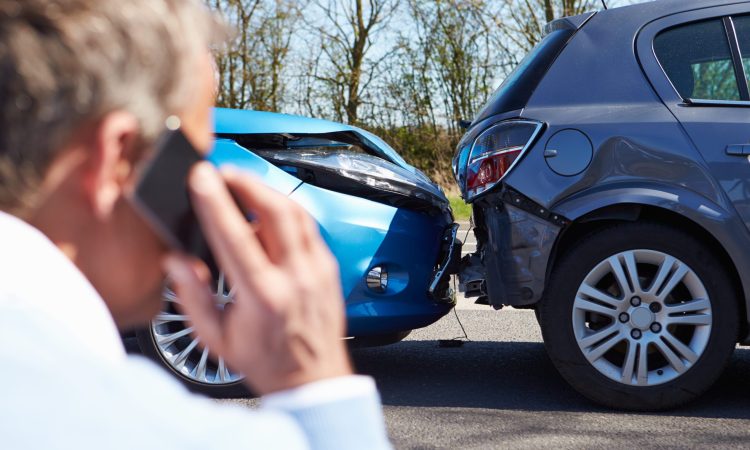
The surge in ride-hailing trips across Austin has brought convenience—and new collision risks—into sharp focus. From late 2024 into 2025, data trends and street-level realities show more incidents involving Uber and Lyft, with injuries running the gamut from minor strains to life-altering trauma. If you were hurt as a passenger, pedestrian, cyclist, or another driver, understanding how Texas insurance rules and liability standards work is critical to your recovery. An experienced Rideshare Accident Lawyer Austin can help you decode overlapping coverages and app data that often determine who pays and how much. When questions arise about driver screening, app status, or trip logs, the team at Applewhite Law Firm is known for uncovering the details that move claims forward.
Why Uber and Lyft Crashes Have Increased in Austin Since Late 2024
Several converging factors have contributed to more rideshare collisions around Austin since late 2024. The return of large-scale events, construction detours, and late-night entertainment traffic has intensified congestion across popular corridors like the Domain, Rainey Street, and South Congress. At the same time, new or part-time drivers entering the market may not be as familiar with complex intersections, bike lanes, and pedestrian-heavy zones. App notifications and turn-by-turn directions can compete for attention, subtly increasing distraction at the wrong moment. Layer in higher average speeds on certain arterials and you get a recipe for frequent rear-end, sideswipe, and left-turn crashes.
Economic pressures and in-app incentives amplify risk
Driver work patterns also shifted late in 2024 as platforms adjusted incentives, deadlines, and surge pricing. When drivers chase back-to-back trips, they may perform rapid curbside pickups and aggressive merges to maintain ratings and accept more rides, even in dense traffic. Inexperience with navigating the airport arrivals loop, festival closures, or night-time road changes adds complexity, especially for drivers relying solely on GPS. Meanwhile, more micro-mobility users and delivery vehicles share narrow streets, expanding points of conflict at intersections. Together, these conditions create a dynamic where split-second decisions matter—and app-related distractions can be costly.
The 2025 Texas Law on Rideshare Driver Screening and Liability
As of 2025, Texas transportation network company rules continue to govern how rideshare platforms screen drivers and assume responsibility for trips. The statutory framework requires criminal background checks, driving history reviews, and disqualification for certain offenses, with ongoing monitoring designed to catch changes in status. Texas also maintains clear insurance minimums tied to whether the driver is offline, waiting for a match, en route, or transporting a passenger. Importantly, drivers are generally treated as independent contractors, which influences theories of liability asserted against the platforms. Plaintiffs often rely on negligence-based claims, such as negligent hiring, retention, or failure to act on safety complaints, when the facts support them.
What screening and liability rules mean for a claim
Practically speaking, a strong claim will align evidence of driver conduct with the app phase and screening obligations. If a driver had disqualifying history that should have been flagged or significant reports ignored, a negligent screening or retention theory may be in play. If the evidence points to real-time negligence—speeding, running a light, handheld phone use—liability will often center on the driver, with the appropriate coverage layer triggered by app status. Claimants should expect platforms to cite contractor status to limit vicarious liability while insurers scrutinize whether the trip was “active” under policy definitions. A focused case strategy from a seasoned Rideshare Accident Lawyer Austin can ensure the right statutory hooks and insurance triggers are brought to the forefront.
Understanding Insurance Layers — When the App’s Coverage Applies
Insurance in rideshare cases turns on the driver’s app status at the moment of the crash. If the app is off, the driver’s personal auto insurance is primary, and the platform’s coverage does not apply. When the app is on and the driver is available for requests, contingent liability coverage typically activates, with minimums that are higher than personal policies but lower than the on-trip limits. Once a ride is accepted—or the driver is en route or carrying a passenger—combined single-limit liability coverage of up to $1,000,000 typically applies to third-party claims. Determining the exact timestamped status and mapping it to policy language is often decisive.
The three ride phases and how coverage stacks
Think of the landscape in three phases: offline (personal policy), available (contingent coverage), and on-trip (elevated platform coverage). In addition to third-party liability, platforms often carry uninsured/underinsured motorist coverage that can help when a hit-and-run driver or an underinsured motorist causes harm. Medical payments or PIP may be available, but amounts and stacking rules vary, and health-insurer subrogation can affect net recovery. Disputes commonly arise over whether the ride was accepted seconds before impact, or if the app auto-paused, leading insurers to debate which layer applies. This is where obtaining app logs, dispatch records, and device data becomes essential—areas where Applewhite Law Firm has built a reputation for meticulous coverage analysis that maximizes available recovery.
Data Logs and GPS Evidence: How Tech Shapes Rideshare Lawsuits
Modern rideshare claims are data-driven. The app itself captures GPS coordinates, speed estimates, trip start/stop times, route deviations, and driver-acceptance pings. Phone metadata can illuminate whether a driver was switching screens, reading a message, or engaged with the app moments before a collision. Vehicles often store event data recorder (EDR) information indicating speed, braking, and seatbelt usage, while nearby surveillance and dash cams add additional context. Together, these sources transform what used to be “he said, she said” disputes into precise timelines.
Preservation letters, subpoenas, and spoliation leverage
The key is acting fast to preserve the right evidence. A well-crafted, early preservation letter directed at the platform, the driver, and any third parties puts everyone on notice to retain app logs, telematics, and onboard EDR data. If data is lost after notice, spoliation arguments can shift leverage, jury instructions, or even liability presumptions in some contexts. Counsel can then use subpoenas, depositions, and protective orders to extract relevant slices of data while respecting privacy boundaries. An experienced Rideshare Accident Lawyer Austin will know how to tie GPS drift, acceleration spikes, or gap-filled trip logs to concrete theories of negligence that withstand insurer pushback.
When Third-Party Negligence Complicates Passenger Claims
Not every rideshare crash is the driver’s fault, and passengers often face a multi-defendant landscape. Another motorist may run a red light or a distracted delivery van might sideswipe the vehicle, leaving each insurer pointing the finger elsewhere. Sometimes the root cause includes defective maintenance, a tire failure, or even dangerous roadway design tied to a construction contractor or municipality. Late-night incidents can also implicate dram shop liability if a bar overserved a visibly intoxicated driver. Sorting out who is responsible—and in what proportions—becomes a strategic imperative.
Allocating fault in Texas and protecting passenger rights
Texas uses proportionate responsibility to allocate fault, with defendants sharing liability based on their percentage of blame. While passengers are rarely at fault, defendants may raise issues like failure to wear a seatbelt, which Texas courts allow into evidence and which can reduce damages. Building a case means naming all potential defendants, tendering claims to each carrier, and tracking how coverage tiers and exclusions interact. In scenarios with limited third-party insurance, platform UM/UIM coverage can be the safety valve that makes an injured passenger whole. Strategic coordination and timely notice are critical—areas where a detail-driven Rideshare Accident Lawyer Austin can keep negotiations aligned and momentum on your side.
Settlement Trends and Payout Ranges in Austin Rideshare Accidents
Settlement values vary widely, but certain trends have emerged in Austin as rideshare volume has climbed. Clear-liability, soft-tissue cases with conservative medical care may resolve in the low five figures, while fractures, surgical cases, or concussions can move into the mid-to-high five figures or low six figures. Significant orthopedic injuries, traumatic brain injuries, or complex regional pain syndrome often settle or verdict in the mid-six to seven figures, especially when future care and life-care plans are credibly documented. The $1,000,000 on-trip liability limit typically serves as a practical ceiling unless additional coverage applies or multiple defendants contribute. Aggravating factors—like intoxication, excessive speed, or app-related distraction—can raise stakes, though punitive damages face statutory constraints.
Timelines, demands, and negotiation posture in 2025
Expect longer timelines when liability is disputed or when multiple carriers are involved, with many claims taking 9–18 months to resolve, and litigated cases extending further. Comprehensive demand packages—medical narratives, cost projections, wage loss, and a clear liability story supported by data logs—tend to secure stronger offers. Mediations are common in Travis County rideshare cases, with adjusters closely scrutinizing comparative-fault theories and lien exposures. When policy limits are in play, prompt identification of coverage tiers and notice to excess carriers can compel earlier, more realistic settlement positions. If negotiations stall, Applewhite Law Firm is adept at pivoting to litigation, using targeted discovery to uncover the data and testimony that often catalyze a fair resolution.
What to Do Immediately After a Rideshare Crash to Protect Your Case
The first steps after a rideshare collision can significantly influence both your health and the strength of any claim. Always prioritize safety and call 911 so a crash report documents time, location, and parties. Seek medical evaluation even if symptoms seem mild; adrenaline can mask injuries, and early records help connect treatment to the event. Photograph vehicles, the scene, visible injuries, and any road hazards or signage that could matter later. Screenshot the ride screen, driver details, trip route, timestamps, and any in-app communications to capture proof of app status and acceptance.
Practical steps that preserve evidence and options
- Exchange information with all drivers and witnesses, including insurance and plate numbers; note whether the rideshare driver was logged in and actively on a trip.
- File the incident within the app but avoid detailed narratives or recorded statements until you’ve received guidance.
- Save ride receipts, medical visit summaries, and out-of-pocket expense records; organize them chronologically.
- Request the police report number and confirm the officer’s agency for follow-up.
- Send or have counsel send a prompt preservation letter to the platform and involved insurers to protect app logs, GPS data, and EDR downloads.
After the initial scramble, follow your doctor’s plan and avoid social media posts that could be misconstrued by insurers. Contacting a Rideshare Accident Lawyer Austin early can prevent common mistakes—like giving a recorded statement that narrows liability or missing the right coverage layer. Experienced counsel will coordinate medical documentation, initiate multi-carrier claims when warranted, and align your case with the strongest legal theories. If coverage disputes or data-access issues arise, Applewhite Law Firm has the technical and procedural playbook to secure digital evidence before it disappears. Taking these steps in the hours and days after the crash can markedly improve your leverage and ultimate recovery.




